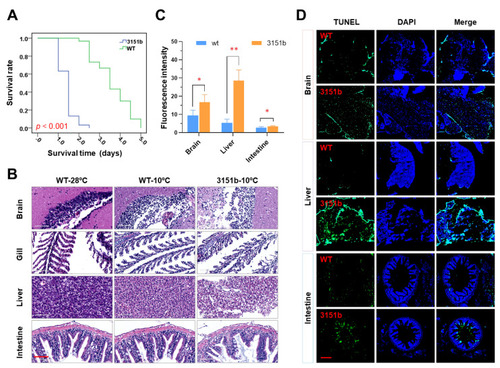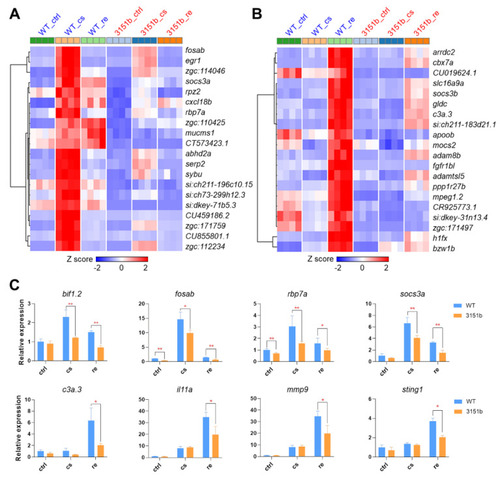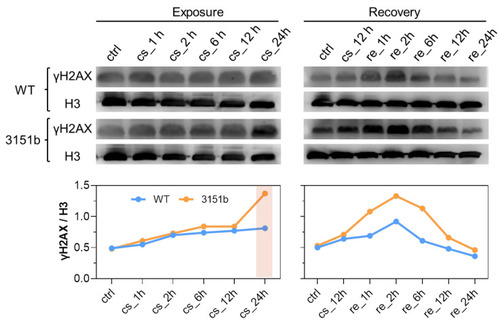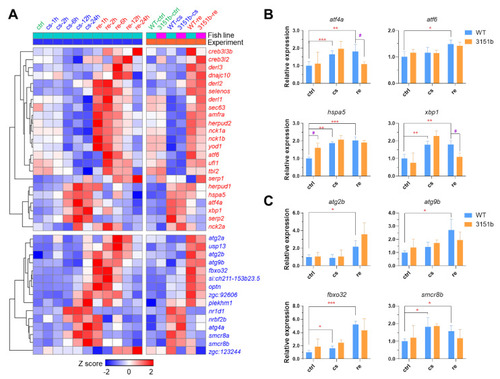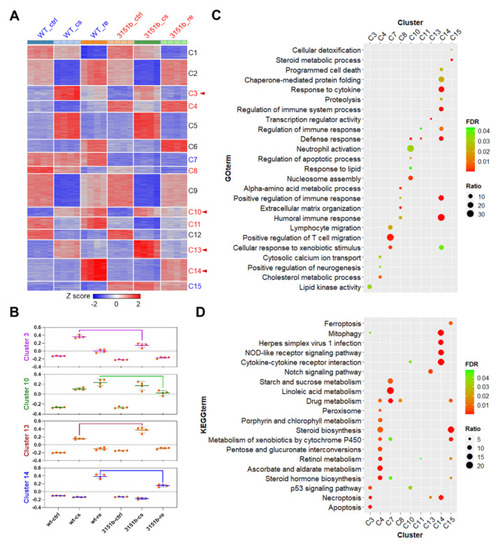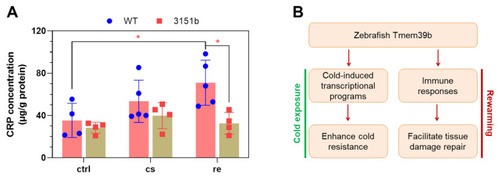- Title
-
Understanding the Function and Mechanism of Zebrafish Tmem39b in Regulating Cold Resistance
- Authors
- Liu, R., Long, Y., Liu, R., Song, G., Li, Q., Yan, H., Cui, Z.
- Source
- Full text @ Int. J. Mol. Sci.

ZFIN is incorporating published figure images and captions as part of an ongoing project. Figures from some publications have not yet been curated, or are not available for display because of copyright restrictions. PHENOTYPE:
|
|
Molecular characteristics of zebrafish Tmem39b. ( |
|
Knockout of the PHENOTYPE:
|
|
Dysfunction of the PHENOTYPE:
|
|
Effects of Tmem39b dysfunction on gene transcriptional expression of zebrafish larvae during cold exposure and rewarming. ( |
|
Representative genes affected by Tmem39b dysfunction upon cold exposure and rewarming. Heatmaps demonstrate expressions of the representative up-regulated genes upon cold exposure ( |
|
Tmem39b protects the organism from cold-warm stress-induced DNA damage. The upper panel contains Western blots for the WT and |
|
Effects of Tmem39b dysfunction on endoplasmic reticulum stress response and autophagy. ( |
|
Biological processes and pathways influenced by |
|
Zebrafish Tmem39b regulates the production of C-reactive protein (CRP) during rewarming and a working model for Tmem39b’s function in determining cold resilience. ( |



